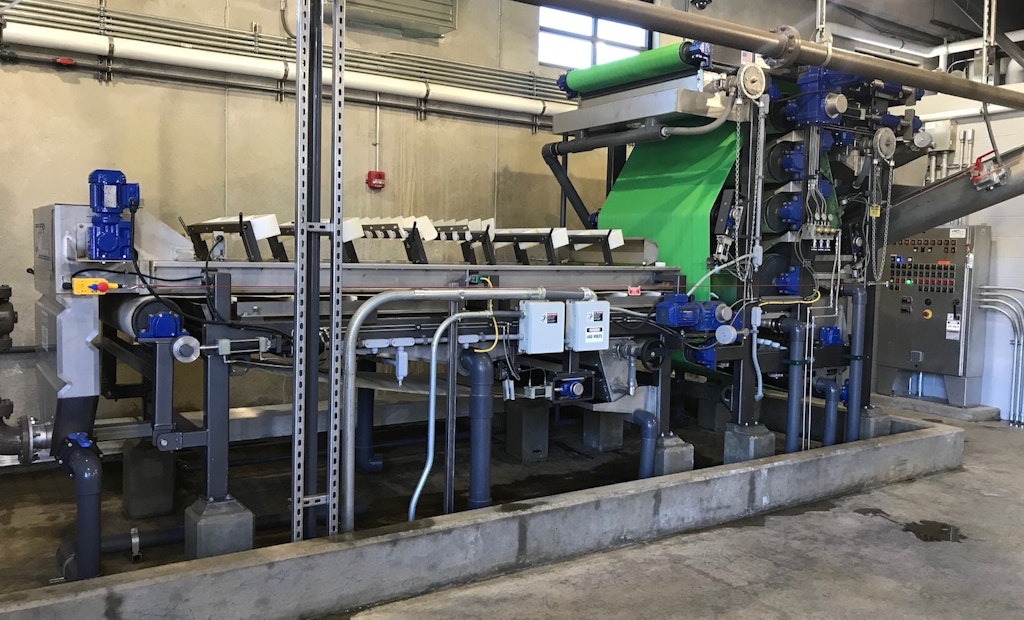Interested in Dewatering/Biosolids?
Get Dewatering/Biosolids articles, news and videos right in your inbox! Sign up now.
Dewatering/Biosolids + Get AlertsThe Betasso Water Treatment Plant is responsible for supplying water to the Boulder, Colorado, area. The plant previously used drying beds to store and dewater their residual solids, but operators were looking for an alternative mechanical dewatering option. After researching various options, they requested pilot testing of various types of equipment. The 1 meter 3DP Belt Press from BDP Industries was selected as the best solution for the plant.
On average, the 3DP processes 750 dry pounds per hour of residuals. The incoming feed solids average 0.7%, with the belt press producing cake solids in the range of 20-24%. The plant also chose to utilize a real-time feed solids analyzer. This analyzer allows the flow to the belt press to be automated and keeps a constant solids loading rate to the belt press. This is very helpful when processing solids with varying feed solids percentages.
An increasing number of water treatment facilities are looking to add mechanical dewatering so that they can process their residual solids onsite, similar to Betasso. Interested facilities begin by evaluating different types of dewatering equipment and technologies. Residuals from WTPs differ in nature from solids at WWTPs and often require dewatering technologies with the features and design elements that can properly handle the WTP residuals. The 3DP Belt Press, a three-belt technology, offers an excellent option for these facilities to consider.
With its history of dewatering aggregate and minerals, as well as WWTP residuals, the 3DP is able to blend the necessary dewatering features to achieve very high discharge cake solids and high solids loading rates with very low polymer dosages and very low energy usage. The use of an independent gravity belt in conjunction with a heavy-duty pressure section has proven to be a great combination for WTP facilities, allowing them to handle ranges of thin or variable feed solids that are often encountered due to variations in incoming turbidity.
Visit the BDP Industries, Inc. Storefront





